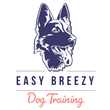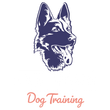Jumping for Joy: How to Curb Your Dog's Enthusiastic Greetings
Dogs jumping up on people can be both endearing and frustrating. While it’s often a sign of affection and excitement, it can also be problematic, especially if your dog is large, enthusiastic or has muddy paws! Understanding why dogs jump, how to address the behaviour, and what to avoid can help you train your dog to greet people calmly. Here’s a guide to managing and preventing jumping in dogs.
Why Do Dogs Jump?
- Seeking Attention:
- Dogs often jump to get attention. When you arrive home, your dog is excited and wants to be as close to you as possible. Jumping up is their way of saying, "Look at me!"
- Greeting Behavior:
- In the wild, dogs greet each other by licking faces, which translates to jumping up to reach human faces. It’s a natural behaviour, especially when they are happy to see you.
- Energy Release:
- High-energy dogs, especially puppies, may jump as a way to release pent-up energy. It’s a form of play and excitement.
What to Do to Prevent Jumping
- Ignore the Jumping:
- When your dog jumps, ask for a sit or walk away or back up to avoid the paws touching you.. Wait until all four paws are on the ground before giving attention. Consistency is key; everyone in the household should follow this rule.
- Reward Calm Behavior:
- Once your dog has all four paws on the ground, reward them with attention, treats, or praise. This reinforces that calm behaviour gets them what they want.
- Teach an Alternative Behavior:
- Train your dog to sit when greeting people. Practice this by having friends or family approach and only rewarding your dog when they sit. Over time, your dog will learn that sitting gets them attention. I often hear “Off!” or “Down!”. Have you taught your dog what that means in that context? If you haven’t, your dog has no idea what it is that you want from them. To teach “Off”, lure your dog up two stairs and then say “Off!” and lure them back on the floor, once those front paws hit the ground say “Yess!” and reward.
- Use a Leash:
- Keep your dog on a leash during training sessions. This allows you to gently guide them into a sitting position when they start to jump. You can step on the leash to prevent them from jumping up on guests.
What Not to Do
- Don’t Yell or Push:
- Yelling or pushing your dog away can be seen as a form of attention, which may inadvertently reinforce the jumping behaviour. ANYTIME YOU TOUCH YOUR DOG, YOU ARE REWARDING THE BEHAVIOUR!
- Don’t Knee the Dog:
- Using your knee to push a dog away can be harmful and is not recommended. It can hurt the dog and damage the trust between you and your pet.
- Avoid Reinforcing the Behavior:
- Be mindful of how you or others might be reinforcing the jumping. Even negative attention can sometimes be seen as a reward.
How We Reinforce Jumping
- Unintentional Rewards:
- Petting or talking to your dog when they jump, even if it’s to scold them, can reinforce the behaviour. Dogs seek interaction, and any attention can be rewarding.
- Inconsistent Rules:
- If some family members or visitors allow the dog to jump while others don’t, it creates confusion. Consistency from everyone interacting with the dog is crucial.
- Rewarding Excitement:
- Greeting your dog with high energy when you come home can encourage jumping. Try to greet your dog calmly and wait for them to settle before giving affection.
Fun Games to Teach Your Dog Not to Jump
- The “Four on the Floor” Game:
- Have a friend or family member help with this game. The helper approaches your dog and turns away if the dog jumps. When the dog remains calm with all four paws on the floor, the helper rewards them with treats and attention.
- The “Sit for Greeting” Game:
- Practice with various people approaching your dog. Ask your dog to sit as the person approaches. If the dog remains seated, they get a treat. If they jump, the person steps back, and the game starts over.
- The “Doordash” Game: click here for video
- This game helps with excitement at the door. Have your dog sit and wait before you open the door. Gradually increase the time they must wait before getting a treat. This teaches patience and calmness.
- The “Mat Training” Game:
- Teach your dog to go to a specific mat or place when guests arrive. Reward them for staying on the mat with treats and praise. This gives your dog a clear and positive alternative to jumping.
Training your dog not to jump requires patience, consistency, and positive reinforcement. By understanding why your dog jumps and implementing these training tips and games, you can help your dog learn to greet people politely, making interactions more enjoyable for everyone involved.




rUhTtsynvLB
XULDfHdkxv
WRbJvzPyFduOjMfB
qmoAtXKSMblIeZ
cifOynGdqHlvokar
Leave a comment